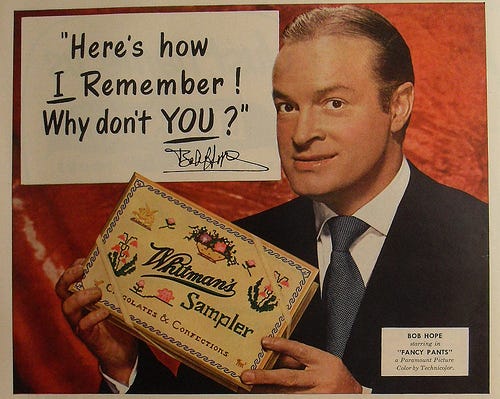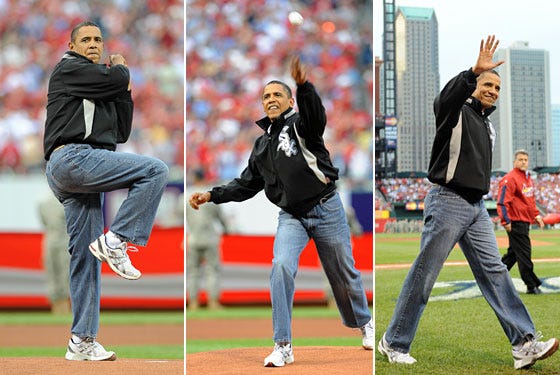So What, Who Cares (vol 2, issue 16) Why shoppers like simplicity

Hello! I have typed and erased a lame joke about writing So What, Who Cares on Groundhog Day and how it means six more weeks of newsletters, so let's just move on from jokes that take the "rodents have unnatural power over polar vortices!" premise and attempt to apply it to email. Let's focus instead of the question of candy for Valentine's Day: Whitman Sampler's, Y/N? Weigh in with your answer via Twitter or email.
*
It is a hard time to be a vaguely preppy American sportswear brand: C. Wonder and Kate Spade Saturday are both shutting down, which means two fewer places to buy jellybean-colored ballet flats and matching statement necklaces.
So what? These brands' failures aren't so much a death knell for the prep revival (which is now firmly mainstream with the pending Lily Pulitzer at Target collection) as they are an indication of a subtle shift in shopper psychology. Fashionista's Lauren Sherman pegged it thusly:
Kate Spade Saturday’s biggest problem might’ve been that it launched with too many categories. Everybody wants to be a lifestyle brand these days, and both C.Wonder and KSS offered everything from jewelry to home goods from the get go. It’s the dream, right? To be like Ralph Lauren, winning in every channel. But when you wrap up a lifestyle brand like a present and hand it over to consumers, they’re not always comfortable accepting it. The young companies that seem to be doing really well right now are all about getting good at one thing. Everlane wants to make great basics, introducing a new product every few months. Mansur Gavriel only introduces one or two new bag silhouettes each season. Because they are considerate, we want more from them.
This is part of an ongoing shift that the Wall Street Journal documented last fall -- shoppers aspiring toward a less-is-more ethos where the focus is on quality, not quantity.
Who cares? Would-be retailers, for sure. It will be interesting to see whether aspirational brands begin making bigger shows of their exquisitely curated inventory, with the implication that the shopper's choices -- though fewer -- are all far superior to what she had back when she had five times the options.
*
The Federal Communication Commission is about to declare that the Internet is a public utility like sewer/gas/electric and therefore should be regulated as such.
This move comes less than a week after the FCC reclassified "broadband." The old definition allowed for a download speed of 4 megabits per second (MBps), and the new one is more than six times as fast -- 25 MBps. The new definition also means a substantial percentage of Americans who had been paying for broadband are no longer receiving such -- a situation that will pressure the U.S. broadband providers to take a good long look at what they're offering consumers and what they can legally charge for it.
So what? These are very big deals because the U.S. government is effectively saying that faster, cheaper broadband is a thing they want very much to happen.
Who cares? Telecoms do, very much. If this FCC really goes through with this, it means that throttling -- i.e. slowing down the transmission of data over the Internet unless you just happen to pay your Internet provider more -- would likely be made illegal. Outlaw throttling and impose "net neutrality," and there goes a potential lucrative source of income for plucky shoestring operations like Comcast and Time Warner.
And -- again -- a whole bunch of Americans who were paying high prices for poky "high-speed" Internet are n

ow no longer getting high-speed Internet under the definition of the law, so they probably care insofar as they might want actual broadband from their ISP.
This is also a huge deal in political circles, mostly because the battle lines were drawn for this about seven years ago when then president-elect Obama made the idea of ubiquitous national broadband part of his presidential platform. In the intervening seven years, there have been policy initiatives aimed at overturning laws prohibiting municipal broadband, offering more broadband access for rural Americans, and making broadband more widely affordable.
Finally, it's a big deal for rural Americans who increasingly rely on the Internet for their businesses, need access to big data in order to do their jobs (vol 1, issue 63), or want to offer a wider variety of educational opportunities to their kids.
*
Your pop culture note of the day is the groundbreaking news that CeCe Bell's El Deafo won a Newberry Honor, a first-ever for a graphic novel. Two other graphic novels were honored: Jillian and Mariko Tamaki won a Caldecott Honor and a Printz Honor for their graphic novel This One Summer, and Loic Dauvillier's Hidden: A Child's Story of the Holocaust was awarded a Batchelder Honor for excellence in translated children’s books.
I enjoyed Comics Alliance pointing this out:
Of note, this year’s winners for non-translated works were all female, and all of the winning books were written with female protagonists and with easy appeal to a female audience.
Of note, this year’s winners for non-translated works were all female, and all of the winning books were written with female protagonists and with easy appeal to a female audience.
Read More: Cece Bell, Jillian & Mariko Tamaki Win Major ALA Awards | http://comicsalliance.com/cece-bell-jillian-mariko-tamaki-win-major-ala-awards/?trackback=tsmclip
The title El Deafo provides a clue to the book's contents, but the NPR interview with Bell is a must-read, especially for her explanation of why comics were the perfect medium for her story:
Because of the speech balloon. For example — if as a lip-reader — if I'm wearing my hearing aids and I'm looking right at you speaking, I understand every word you say, because I've got some sound coming in and the visual clues from your lips. So in a graphic novel, that speech balloon would be understandable to everybody, what you were saying in that balloon.
But if I maybe had my hearing aids out and wasn't looking at you, your speech balloon would be empty, because I wouldn't know what you were saying, and I wouldn't hear what you were saying. And then if I had my hearing aids in, and I'm not looking at you — I can hear your voice because of my hearing aids, but it's all garbled, and so the speech in the speech balloon would be garbled.
It's just the perfect visual way to show all the ways a hard-of-hearing or a deaf person might or might not be hearing.
The entire list of the American Library Association's 2015 honors for books, video and audio books for children and young adults is here. I will be sucking this down into Evernote/adding the winners to my daughter's Amazon wishlist, and considering my gift shopping for the short-people set done.
*
Did you miss an issue of So What, Who Cares? The archive is here. Are there typos? I apologize in advance.
As always, I welcome your feedback and suggestions -- you can reach me through Twitter or email. Please do not hesitate to let me know what you think about So What, Who Cares, or suggest links/topics/pop culture that rings your bell.
If you really like it, tell a friend to subscribe.



